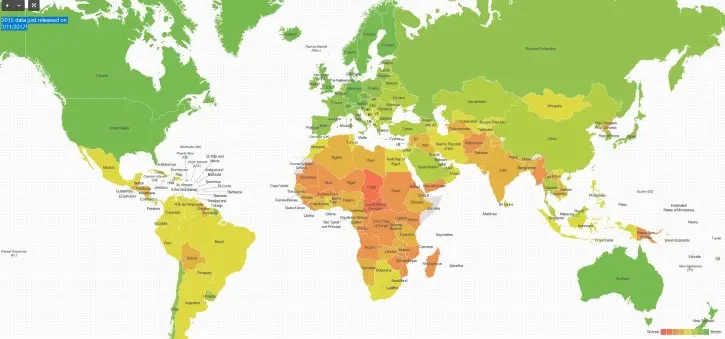A couple of years ago, the University of Notre Dam, in the United States, published an index specifying the countries most or least susceptible to being affected by climate change. Known as the Notre Dam Global Adaptation Initiative (ND-GAIN), the index is reappearing on the Internet and its findings are no less relevant than in the past.

It is a comprehensive index: it analyzes the vulnerabilities of each nation, as well as its response to action to adapt. Among many other things, it considers the current state of its infrastructure, food supply and technological capabilities, it also takes into account whether the country is prone to natural disasters or political turmoil, and whether the authorities are prepared for a future of climate change, or are distracted by other issues.
These are the five best-prepared and five least prepared nations in the world, specially ranked based on vulnerabilities in their preparedness. You can see the full index on this site.
The countries most likely to “survive” climate change are:
- Denmark.
- New Zealand.
- Norway.
- Singapore.
- United Kingdom.
The nations least likely to “survive” climate change are:
- Central African Republic.
- Chad.
- Eritrea.
- Burundi.
- Sudan.
In case you’re wondering, Mexico is in 68th position (a rise since 1995 that was stalled with the PRI’s rise to power), our northern neighbors are in eleventh position, Australia is in 13th position, and Canada is in 14th. The Chinese are at number 48 and the Indians at number 119.
An unfair situation.
Did you identify the pattern? Probably not surprisingly, the richest and most developed nations are generally the best prepared, while the opposite is true for low-income countries.
One of the most unfair things about climate change is that the most polluting countries are often those least likely to be affected by it. It’s morally repugnant, and it was one of the reasons why the Paris agreement came about – the goal was to propose to richer nations to contribute to help poorer countries.
Wealthy nations are sure to be affected: for example, the United States has a plan to deal with a refugee crisis caused by climate change, unprecedented natural disasters, and an economic recession by 2100, but if you compare it to regions like Africa, India, or the Middle East and South America, These are very tenuous consequences.
Many countries in these regions will go into a state of collapse and become uninhabitable. Unlike much of Europe, North America or East Asia, these countries have several of the antagonistic factors in the issue: intermediate economies, geographical positions along coastlines, predisposition to flooding, low latitudinal positions and unstable political situations.
Although this index looks at survivability on a national scale, it is important to note that when we talk about wealth, the same pattern is replicated on a local scale. Whether in Bangladesh or England, the poorest cities suffer the most when climate change comes knocking.
